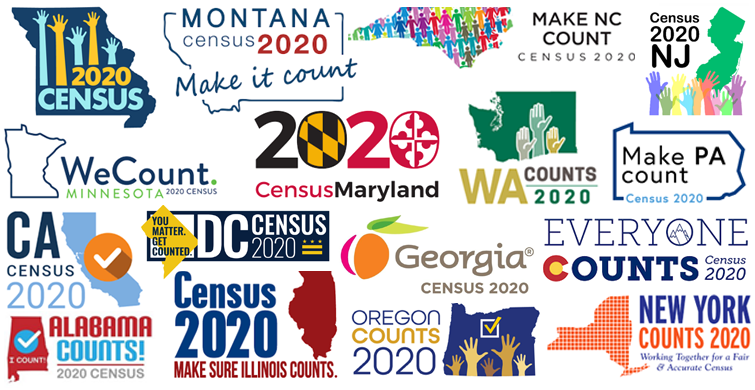Make Sure Everyone Gets Counted

With the 2020 Census quickly approaching, states, cities, and organizations are gearing up to make sure everyone gets counted. There’s a lot at stake. Census results determine how many congressional seats each state gets. They help determine how congressional districts are drawn. And they determine how an estimated $880 billion in federal funding are distributed to local communities.
The 2020 Census is relying on local entities like organizations and city and state governments to help with outreach, to make sure everyone participates and gets counted. To help, they’ve provided some datasets showing where people may be reluctant to respond, that can be used to target these efforts.
The Census Bureau’s goal is to count every person living in the country, and they’re taking steps to ensure they make an accurate count. However, an undercount is still a concern that many take seriously, which is why many local entities are working to assist the Census in their outreach.
If random households nationwide aren’t counted, that’s a problem, but the bigger concern is that certain groups of people share characteristics that make them either reluctant or unable to respond to the census. The recent battle over including a citizenship question was based on the premise that such a question might discourage non-citizens from responding (the question will not be included). Some groups, like those with lower levels of education, might not be aware of the importance of responding to the Census. And some people may simply not have the time or means to respond.
To help local entities like governments and organizations target outreach efforts effectively, the Census provides tools to help locate hard-to-count populations.
2010 Mail Return Rate
The first tool the Census offers is data on the mail return rate for the 2010 Census, by block group. Of all the households that were sent census forms, how many responded by mail?
It’s important to point out that if a household didn’t respond by mail, they were still counted through some other means. A census-taker may have called, visited, or found other evidence of inhabitants. However, those other means are more expensive and less accurate than self-response. Areas with a low mail return rate likely signify areas where more people are reluctant to respond to the questionnaire.
Low Response Score
There are limits to what 2010 data can tell us. After all, if the country looked the same today as it did in 2010, why would we need another census? So how can we predict where hard-to-count populations live today?
For this, the Census created an index called the Low Response Score that uses more current data from the American Community Survey (ACS). Looking at the mail return rate in the 2010 Census, and demographic information collected around that same time through the census and ACS, they identified characteristics closely correlated with hard-to-count populations. By using more current demographic data from the ACS, we can see where populations that were previously less likely to respond live today.
Here, a high number value indicates a population less likely to respond.
ACS Response Rates
The 2020 Census is going to differ from the 2010 count in one crucial respect: The primary mode of response will be online, not through the mail. Though mailing a response will still be possible, it’s one more potential obstacle that people without internet access might face.
Unfortunately, since the Low Response Score is based on the mail-based 2010 Census, it doesn’t account for internet access. Are there any Census Bureau surveys that have are conducted primarily over the internet we can turn to? Yes: The American Community Survey, which has been conducted over the internet for most of the last decade.
Looking at response rates to the most recent ACS (conducted from 2013-2017) might tell us who’s less likely to respond to the next census:
The first thing you might notice is these rates are much lower than the return rate for the 2010 Census. The decennial census comes with media coverage, concerted outreach, and a Constitutional mandate. In contrast, most people haven’t heard of the ACS. This accounts for much of the difference. But even though the response rates are lower overall than we should expect for the 2020 Census, the large differences in response rates between areas can tell us where to focus outreach efforts. Where ACS response rates are low, census responses are likely to be low as well.
An accurate census count helps governments, organizations, companies, and researchers for the decade to come. This data is available to all users, in the Federal Guidelines menu, under Census Bureau Response Rates.